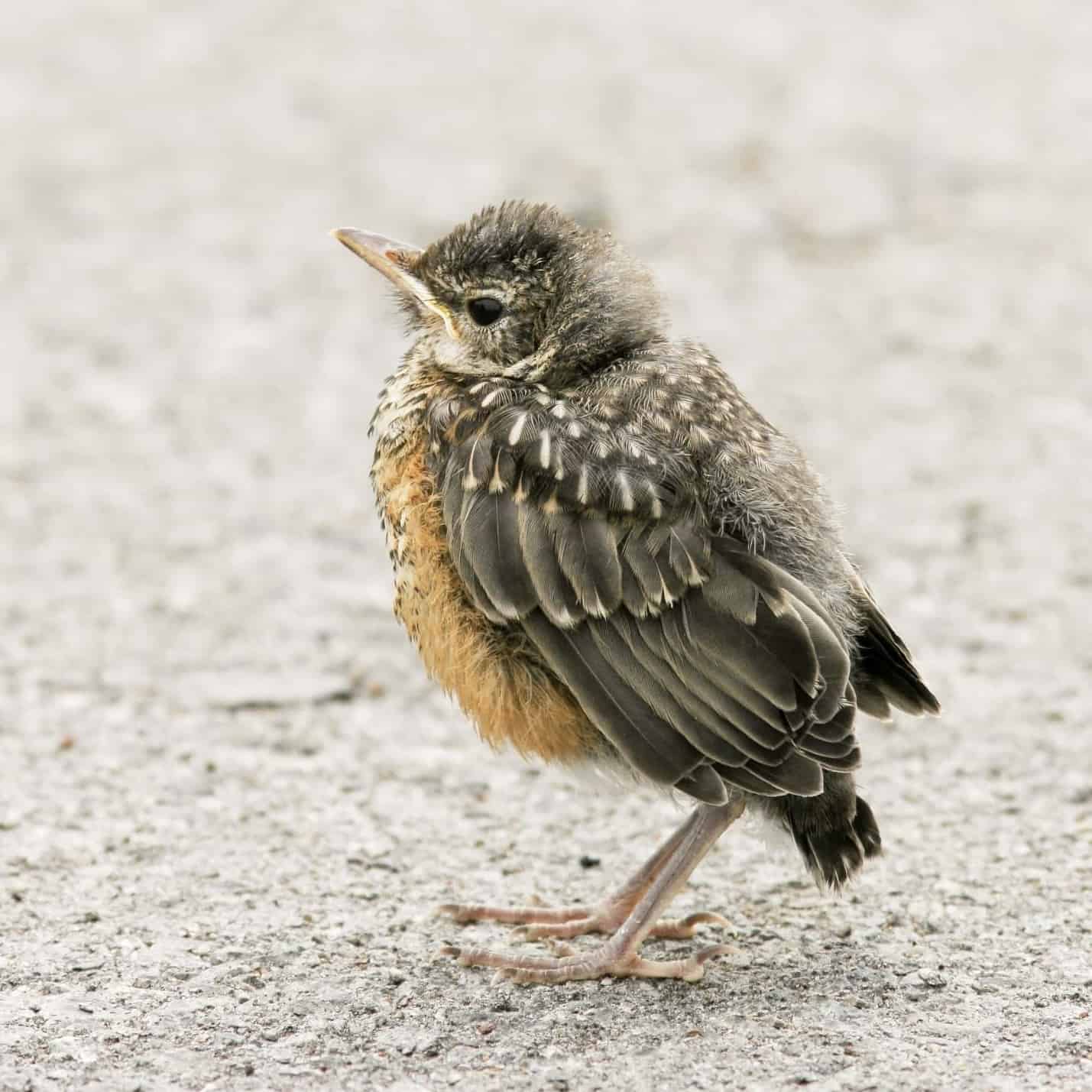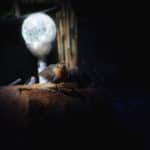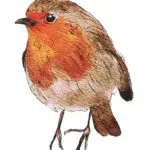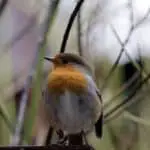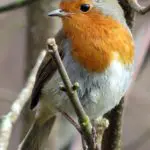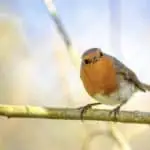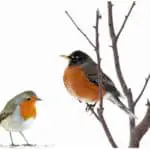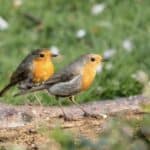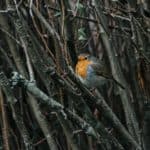You may be curious to find out exactly what a robin gets up to once it has made it through some of the most perilous days of its life. How likely is it that a fledgling robin will survive when it flies the nest, and where do baby robins go when they leave the nest?
The First Year Of A Robin’s Life
When a female robin is nesting, it lays approximately one egg per day for between 4-6 days. The eggs take up to a fortnight to hatch, and will be closely monitored by the female robin during this time.
‘Nestlings’ are baby robins that are newly hatched. Robins are nestlings for anywhere between 9-16 days. While a baby robin is in this stage it won’t leave the nest, and relies heavily on its parents for food. During this stage, baby robins are vulnerable to sickness caused by parasites. They do not have feathers, and should be re-nested if found outside of the nest.
‘Fledglings’ are baby robins that are transitioning from the nestling stage into adulthood. It is during this time that robins will leave the nest, a process that takes 10-15 days, before they become fully independent. The majority of robins die within the first year of life, while those that make it past the first year may live for five more years, or even up to 15 years if in captivity.
A robin fledgling has all or most of its feathers, and, if found outside of the nest, is likely there by choice. Therefore, you should refrain from attempting to re-nest them if they are found wandering along the ground beneath their nest.
Once robins are a year old, they will begin to mate, and typically a female robin will have 2-3 nestings per year during the spring and summer months. One pair of robins may have up to 18 nestlings per year, although sadly most of these will not live to one year old.
Where Does A Robin Fledgling Go When It Leave The Nest?
After transitioning from the nestling phase to the fledgling stage, baby robins will still depend on their adult parents for protection and food for another two weeks. Typically, the male robin will tend to the robin fledgling, while the female robin will prepare another nest for her next clutch of eggs.
The male parent will typically feed fledglings with insects and worms, allowing it to build up its strength until it reaches the size of an adult robin. Usually this doesn’t take long! During this period, the robin fledgling will learn to fly, and will need to grow adult feathers before it is an independent flier.
When the male parent eventually leaves the fledglings to tend to the new nestlings, the fledglings will be left to fend for themselves. During this time, they may learn from other robins, but will be largely responsible for sourcing their own food.
A robin fledgling is likely to stay close to where they hatched for a period of a couple of months after they fly the nest. They’re likely to not travel far over their lifetime. Once they are 2-3 months old, their speckled feathers will malt away and they will develop the characteristic red chest of an adult robin.
By the time the next spring and summer rolls around, they will be old enough to have their own nestlings.
What Does A Robin Fledgling Eat?
A robin fledgling eats insects and worms primarily. They are especially fond of beetles, and often take advantage of freshly dug soil in your garden to source some worms that have been unearthed. In addition to this, robins also eat peanuts, raisins, fruit, mealworms and various different seeds.
Robins typically eat off the ground rather than from hanging bird feeders. They favour a tray of mixed seeds and mealworms on the ground, and benefit from the odd bit of fruit. A robin fledgling is particularly susceptible from getting ill due to mould, so make sure to remove damp food that hasn’t been eaten in a few days.
Contrary to popular belief, bread isn’t the best food source for birds such as robins as it doesn’t contain the vital nutrients they need to survive during the winter. It will, however, fill them up and discourage them from eating other, more nutritious foods.
Severe winter weather, territorial clashes and infections are some of the most common causes of robin mortality. In addition to this, both a male and a female robin will have a large number of predators. From domestic pets such as cats and dogs, to foxes and even other birds such as crows and owls, robins are hunted by many other animals.
You may also like…
- 4 Possible Reasons Why Robins Sing At Night
- Why Robins Have Red Chests
- Where Do Robins Go As Night Falls
- Where Do European Robins Go In Winter
- Where Do European Robins Go In Summer
- The Difference Between European Robin & American Robin
- Do European Robins Migrate
- Do Male & Female European Robins Sing
- Where Do European Robins Live

